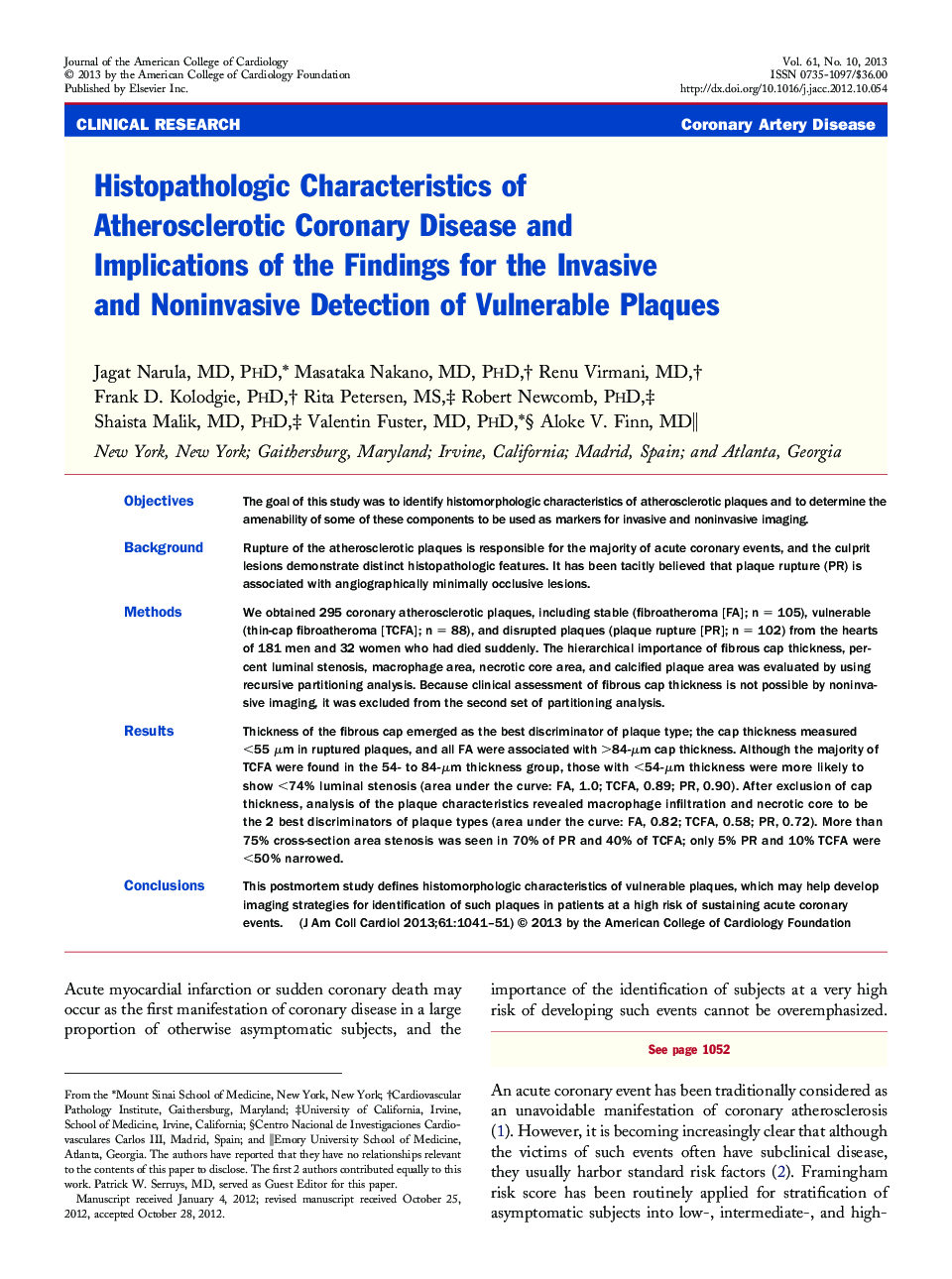| کد مقاله | کد نشریه | سال انتشار | مقاله انگلیسی | نسخه تمام متن |
|---|---|---|---|---|
| 2945812 | 1577168 | 2013 | 11 صفحه PDF | دانلود رایگان |

ObjectivesThe goal of this study was to identify histomorphologic characteristics of atherosclerotic plaques and to determine the amenability of some of these components to be used as markers for invasive and noninvasive imaging.BackgroundRupture of the atherosclerotic plaques is responsible for the majority of acute coronary events, and the culprit lesions demonstrate distinct histopathologic features. It has been tacitly believed that plaque rupture (PR) is associated with angiographically minimally occlusive lesions.MethodsWe obtained 295 coronary atherosclerotic plaques, including stable (fibroatheroma [FA]; n = 105), vulnerable (thin-cap fibroatheroma [TCFA]; n = 88), and disrupted plaques (plaque rupture [PR]; n = 102) from the hearts of 181 men and 32 women who had died suddenly. The hierarchical importance of fibrous cap thickness, percent luminal stenosis, macrophage area, necrotic core area, and calcified plaque area was evaluated by using recursive partitioning analysis. Because clinical assessment of fibrous cap thickness is not possible by noninvasive imaging, it was excluded from the second set of partitioning analysis.ResultsThickness of the fibrous cap emerged as the best discriminator of plaque type; the cap thickness measured <55 μm in ruptured plaques, and all FA were associated with >84-μm cap thickness. Although the majority of TCFA were found in the 54- to 84-μm thickness group, those with <54-μm thickness were more likely to show <74% luminal stenosis (area under the curve: FA, 1.0; TCFA, 0.89; PR, 0.90). After exclusion of cap thickness, analysis of the plaque characteristics revealed macrophage infiltration and necrotic core to be the 2 best discriminators of plaque types (area under the curve: FA, 0.82; TCFA, 0.58; PR, 0.72). More than 75% cross-section area stenosis was seen in 70% of PR and 40% of TCFA; only 5% PR and 10% TCFA were <50% narrowed.ConclusionsThis postmortem study defines histomorphologic characteristics of vulnerable plaques, which may help develop imaging strategies for identification of such plaques in patients at a high risk of sustaining acute coronary events.
Journal: Journal of the American College of Cardiology - Volume 61, Issue 10, 12 March 2013, Pages 1041–1051